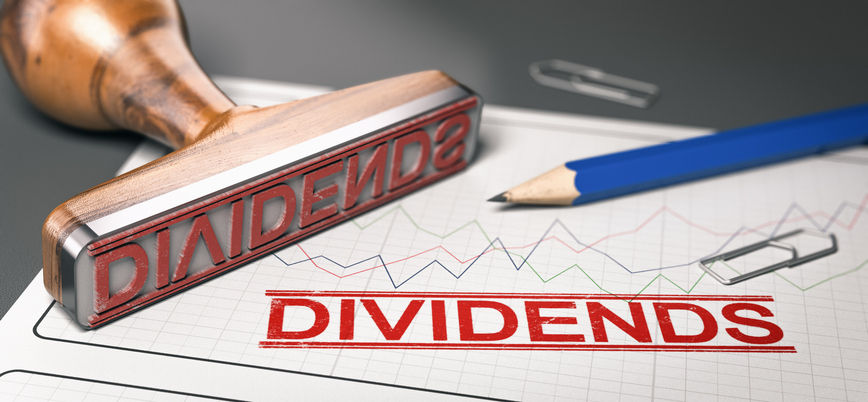Planning for retirement involves balancing the need for steady income with the goal of maintaining and growing savings. Dividend-paying stocks may provide regular cash distributions along with the possibility of long-term growth. These investments also carry risks, so they are generally considered as one of several investment strategies that can be used in building a retirement portfolio. A financial advisor can help you evaluate whether dividend-paying stocks fit into your retirement income plan.
What Are High-Yield Dividend Stocks?
High-yield dividend stocks are shares of companies that distribute a relatively large portion of their profits back to shareholders in the form of dividends. These dividends are typically expressed as a percentage of the stock price, known as the dividend yield. A stock is considered “high-yield” when its payout is notably above the average of the broader market.
While higher dividend yields may seem appealing, they can also take on added risk. In some cases, yields go up when a company’s stock price falls because of business or earnings concerns. For this reason, it can be useful to distinguish between dividends that are supported by a company’s financial position and those that may be less sustainable. Reviewing factors such as cash flow, debt and dividend history can provide insight into the stability of future payments.
When chosen strategically, high-yield dividend stocks can offer steady income and the possibility of capital growth. They may also deliver cash flow during periods of market volatility. However, they are usually considered most effective as part of a diversified portfolio that balances income, growth and risk.
Benefits of Investing in High-Yield Dividend Stocks for Retirement

One of the primary benefits of high-yield dividend stocks is the consistent income they provide. For retirees who no longer receive a paycheck, dividends can act like a substitute paycheck, arriving at predictable intervals and helping to cover everyday expenses. This reliability makes them appealing for those looking to preserve financial independence throughout retirement.
High-yield dividend stocks also have the potential to keep pace with inflation. Many companies that pay dividends regularly increase their payouts over time, helping retirees maintain purchasing power even as the cost of living rises. But unlike fixed-income investments like bonds, which may lose real value during inflationary periods, dividend-paying stocks can offer a built-in hedge.
In addition to income, these stocks may also appreciate in value over the long run. Retirees can benefit not only from the cash flow but also from potential portfolio growth if the companies continue performing well. This combination of income and appreciation can help ensure that retirement savings last longer.
Risks of Investing in High-Yield Dividend Stocks
One of the biggest risks of high-yield dividend stocks is that companies may lower or suspend their payouts. Dividends are not guaranteed, and if a company faces financial strain or shifting priorities, management might reduce the dividend to conserve cash. For retirees relying on steady income, a dividend cut can disrupt financial plans and create unexpected shortfalls.
Sometimes a stock’s yield looks attractive because its share price has fallen sharply, not because the company is fundamentally strong. This scenario, known as a value trap, can lure investors into buying stocks that appear to offer high income but actually signal deeper problems. If the underlying business continues to struggle, both the dividend and the stock’s value may decline.
Another risk of high-yield stocks is that they are often concentrated in specific sectors, such as utilities, real estate and energy. While these industries can be reliable sources of income, overexposure leaves investors vulnerable to sector-specific risks like regulatory changes, commodity price swings or shifts in consumer demand. Without diversification, retirees may face outsized losses if a single sector experiences downturns.
Rising interest rates can also reduce the appeal of dividend stocks. When safer alternatives like bonds begin offering higher yields, dividend-paying equities may lose value as investors shift their money elsewhere. Inflation can further pressure companies by increasing costs, which may threaten their ability to sustain generous payouts. Both factors can limit the long-term reliability of high-yield dividends.
Tips to Help You Grow Your Portfolio for Retirement
Building a retirement portfolio involves more than focusing on the highest dividend yields. The goal is to create a strategy that balances income, growth and risk. Careful planning and consistent investing can help support both long-term savings and future income needs. Here are four tips to consider:
- Diversify your investments. Spread money across different sectors and asset types to reduce risk if one area performs poorly.
- Reinvest dividends. Using dividends to buy more shares can grow your portfolio faster over time.
- Review and rebalance. Check your portfolio regularly and adjust it to stay on track with your goals.
- Work with an advisor. A financial advisor can help shape a retirement plan that fits your taxes, income needs, and long-term goals.
Bottom Line

High-yield dividend stocks can offer income and potential long-term growth in retirement. But these investments also carry risk. A careful selection and a diversified portfolio can help you manage those risks. With planning and professional advice, dividend-paying stocks can be part of a retirement strategy that balances income, growth and risk.
Retirement Planning Tips
- A financial advisor can help you determine whether you have enough saved for retirement and recommend strategies to grow your nest egg. Finding a financial advisor doesn’t have to be hard. SmartAsset’s free tool matches you with vetted financial advisors who serve your area, and you can have a free introductory call with your advisor matches to decide which one you feel is right for you. If you’re ready to find an advisor who can help you achieve your financial goals, get started now.
- If you want to diversify your portfolio, here’s a roundup of 13 investments to consider.
Photo credit: ©iStock.com/ipopba, ©iStock.com/Olivier Le Moal, ©iStock.com/cacaroot
